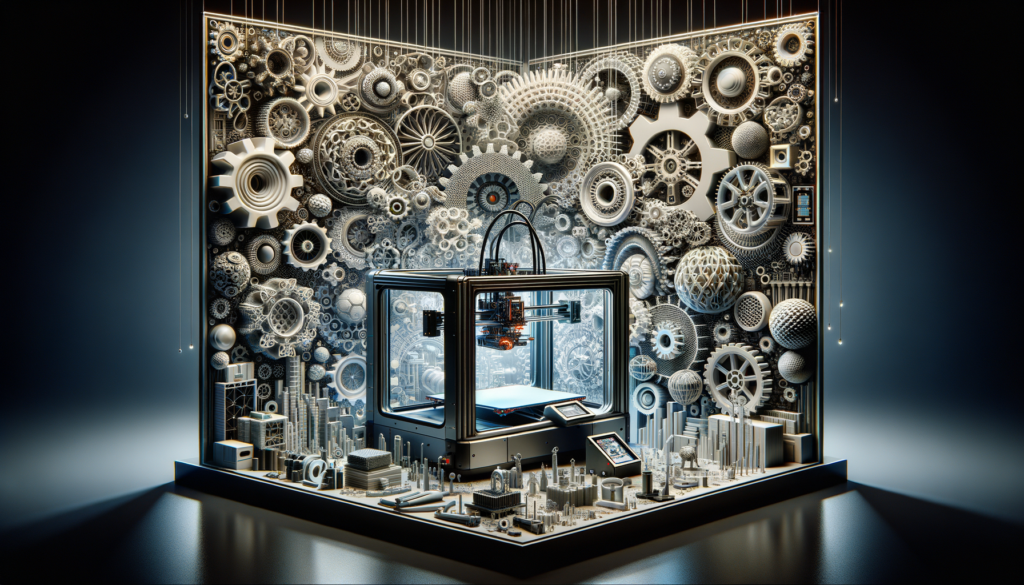The Gaming Blog

The Ultimate Guide to 3D Printers: Revolutionizing Manufacturing and Innovation
Introduction to 3D Printing
3D printing, also known as additive manufacturing, has emerged as a groundbreaking technology that is reshaping the landscape of manufacturing and innovation. By enabling the creation of three-dimensional objects from digital models, 3D printers offer unprecedented possibilities across various industries. From rapid prototyping to customized production, the applications of 3D printing are vast and continually expanding. This article delves into the multifaceted world of 3D printers, examining their impact, functionality, and future potential.
The Mechanics of 3D Printing
At the heart of 3D printing lies a fascinating process that involves layer-by-layer construction of objects. Unlike traditional manufacturing methods that often involve subtractive processes, 3D printing builds objects by adding material, which can significantly reduce waste. The process begins with a digital design, usually created using computer-aided design (CAD) software. This digital model is then sliced into thin horizontal layers, which the 3D printer uses as a blueprint to construct the object.
3D printers utilize various materials, including plastics, metals, and ceramics, each offering distinct advantages for different applications. For instance, plastic filaments are commonly used for prototyping due to their affordability and ease of use, while metal powders are favored in industries requiring high-strength components. The versatility of materials further enhances the adaptability of 3D printing technology, making it suitable for diverse fields such as aerospace, healthcare, and automotive manufacturing.
- Layer-by-layer construction minimizes waste.
- Variety of materials: plastics, metals, ceramics.
- Applicable in multiple industries: aerospace, healthcare, automotive.
Applications and Innovations in 3D Printing
The applications of 3D printing are as diverse as they are innovative. In the medical field, 3D printers have revolutionized the production of prosthetics and implants, allowing for highly customized solutions tailored to individual patient needs. This customization extends to the creation of surgical models and tools, enhancing precision and outcomes in complex procedures.
In the realm of consumer goods, 3D printing has enabled the production of customized products ranging from eyewear to footwear, offering consumers a level of personalization previously unattainable. The technology is also making waves in the fashion industry, where designers are experimenting with 3D printed fabrics and accessories, pushing the boundaries of creativity and design.
Furthermore, 3D printing is playing a pivotal role in the education sector, where it serves as a hands-on tool for teaching complex concepts in science, technology, engineering, and mathematics (STEM). By bringing theoretical models to life, 3D printers enhance student engagement and understanding, preparing the next generation of innovators.
Challenges and Considerations
Despite its numerous advantages, 3D printing technology is not without its challenges. One of the primary concerns is the speed of production, which can be slower compared to traditional manufacturing methods. This limitation is particularly significant in industries requiring mass production, where efficiency and speed are paramount.
Another consideration is the cost of 3D printing materials and equipment, which can be prohibitive for small businesses and hobbyists. Although prices have been decreasing over time, initial investments remain substantial, potentially limiting accessibility.
The quality and durability of 3D printed objects are also subject to scrutiny. While advancements in materials and techniques have improved outcomes, achieving consistent quality across batches can be challenging, necessitating rigorous testing and quality control measures.
- Speed of production can be slower than traditional methods.
- Costs of materials and equipment can be high.
- Quality control is crucial for consistent outcomes.
The Future of 3D Printing
Looking ahead, the future of 3D printing is filled with exciting possibilities. As technology advances, we can anticipate improvements in speed, material range, and accessibility, making 3D printing an integral part of mainstream manufacturing processes. The development of new materials, such as bio-inks for tissue engineering, holds promise for groundbreaking applications in the medical field, potentially revolutionizing organ transplants and regenerative medicine.
Moreover, the integration of artificial intelligence and machine learning with 3D printing technology is set to enhance design capabilities and optimize production processes. This synergy could lead to more efficient and innovative manufacturing solutions, driving further adoption across industries.
In conclusion, 3D printing stands at the forefront of a technological revolution, offering transformative potential for industries worldwide. As the technology continues to evolve, its impact on manufacturing, innovation, and everyday life is poised to grow, shaping a future where the possibilities are limited only by our imagination.









